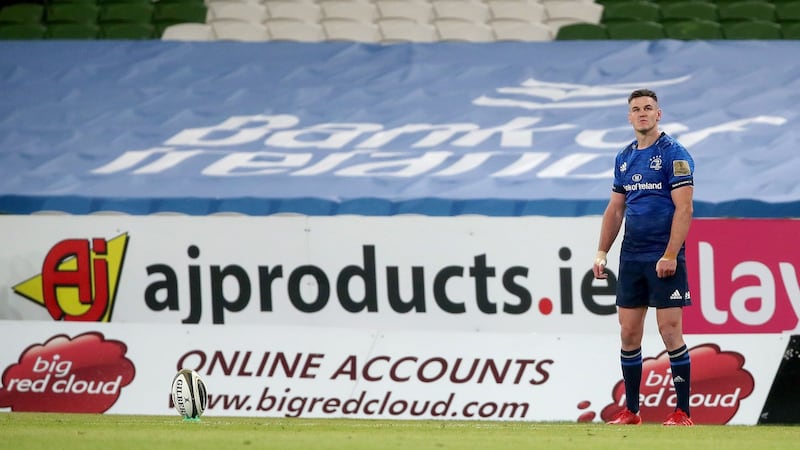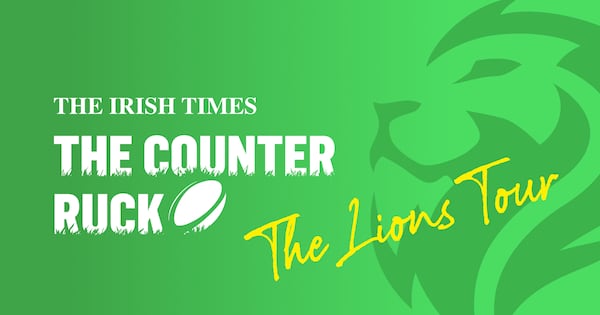Brian O'Driscoll had barely turned 20 when he announced himself to the world in his rookie season with that hat-trick in Paris. He was only 21 when he confirmed his status as a global star with that virtuoso solo try for the Lions at the Gabba in Brisbane. Cue the Lions' fans serenading him with their Waltzing O'Driscoll ditty.
At the time, his star shone brighter than any other player on the rugby stage.
With his trademark low centre of gravity and acceleration, O'Driscoll was never more potent than in those early 20s. Almost a decade later, by the time O'Driscoll turned 30 midway through the 2008-09 season, he'd suffered his share of injuries, notably that shoulder reconstruction following the Lions tour to New Zealand in 2005, and his one dip in form circa 2008.
Yet ask the man himself, and he maintained that he played his best all-round rugby in the 2008-09 season, when captaining Ireland to their first Grand Slam since 1948 and helping Leinster to their first Heineken Cup.
By the time he turned 30, O'Driscoll may not have had quite the same acceleration, although he still burned Lionel Beauxis for a classic outside centre's try from outside the 22 in the opening win over France.
Ireland's greatest rugby player isn't the first, and won't be the last, to produce his best rugby in his 30s
However, he'd also mastered the art of burrowing over from close range, and finished the 2009 Six Nations as the tournament's joint top try-scorer with four in five games. With his sharper reading of the game and ability to pick his moments, nor did his strike rate drop appreciably in his 30s. With experience, he'd also become a more complete player and more refined leader, had developed his kicking game and had become an outstanding defender in a pivotal defensive position (part of the reward being intercept tries against Italy and in Leinster's semi-final win over Munster).
Rewarding
With a little help from his Leinster and Irish team-mates, and Joe Schmidt, his 30s were certainly O'Driscoll's most rewarding as a player, with two more Heineken Cup triumphs and a second Six Nations title in 2014 after turning 35 in his valedictory campaign.
Ireland's greatest rugby player isn't the first, and won't be the last, to produce his best rugby in his 30s. Ireland's leading quartet of out-halves – Eric Elwood, David Humphreys, Ronan O'Gara and Johnny Sexton (World Player of the Year at 33) – all arguably played their best rugby in their 30s.
Admittedly, it's more usual for forwards to endure longer – witness Rory Best and John Hayes playing test rugby past their 37th birthdays which, perhaps, is also attributable to Irish rugby's player welfare management.
Longevity is particularly true of locks. This is perhaps because, as Nathan Hines often freely admitted, the advancing years had negligible impact on him as he never had any pace to begin with. Hines played on until he was 39, while Brad Thorn (signed on a three-month deal in part to fill the void left by Hines's departure at Leinster) played on until he was 41.
No player can have left such an indelible impact on the province in such a short space of time as Thorn did in those last three months of the 2011-12 season when helping Leinster to their third Heineken Cup triumph.
Always first onto the training ground and last to leave, Thorn had his teammates in awe of his famed professionalism and devotion to training. In another respect his career study is particularly relevant. Previously a celebrated rugby league player in Australia, in 2001, at the age of 26 and a just a year into his first foray into rugby union in New Zealand, Thorn declined an invitation to join the All Blacks' end-of-year tour to take a year's sabbatical from the game.
He and Mary-Anne married and travelled to Spain, France and Italy, as well as around New Zealand, and camped along the east coast of Australia. He did some labouring with his brother-in-law.

Sexton looks stronger and younger (maybe it's the Peaky Blinders haircut) and <a class="search" href='javascript:window.parent.actionEventData({$contentId:"7.1213540", $action:"view", $target:"work"})' polopoly:contentid="7.1213540" polopoly:searchtag="tag_person">Conor Murray</a> still has plenty to offer
In an interview with The Irish Times in April 2012, Thorn admitted: “When you think about it, it’s like a half-time break and so I wonder what that did for me, you know? I imagine that’s probably done heaps for me.
“I’ve always gone hard and if you went hard every year surely you would have to break down at some stage,” he reasoned.
Recharged
Thorn was refreshed and recharged as much mentally as physically. His decision was brave and ahead of its time, and reaped longer-term rewards. While these are early days in rugby’s return from its enforced hiatus, there’s every reason to believe players will have been rejuvenated by a five-month “time out”.
Careers may have become shorter but, with a little luck in avoiding injuries, many players are liable to produce their best rugby after turning 30 – all the more so if afforded a break of five months from playing matches.
Sexton looks stronger and younger (maybe it's the Peaky Blinders haircut) and at just 31, Conor Murray still has plenty to offer, all the more so looking at how Aaron Smith (also 31) has returned better than ever in New Zealand's Super Rugby Aotearoa campaign.
For players such as Cian Healy, Peter O'Mahony and Keith Earls, the chance to revive themselves mentally while taking greater care of their bodies will have been all the more welcome in the wake of an exacting World Cup year.
Perhaps the timing of this hiatus will prove most beneficial to players at the midway point of their careers, or in their late 20s.
While Andrew Conway does not turn 30 until July next year, the manner in which he has resumed his best season to date, looking every bit as sharp as he had been when forcing his way into Ireland's starting Six Nations team, strongly suggests his best years are still ahead of him.
Of that vintage, he won’t be alone.
gthornley@irishtimes.com












